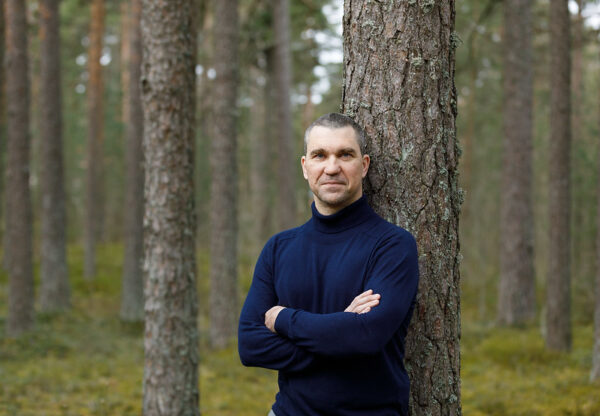Forest biodiversity is critical in maintaining healthy ecosystems, providing essential services such as carbon sequestration, water purification, and habitat for countless species. The forests of the Nordic, Baltic, and Central European regions are rich in biodiversity, supporting a wide range of flora and fauna vital to local ecosystems and the global environment. However, human activity, climate change, and deforestation have placed immense pressure on these forests, challenging their resilience and ability to thrive.
In this article, we explore the importance of forest biodiversity in these regions, the threats they face, and the role of organizations like CollectiveCrunch in tracking and promoting sustainable forest management for a more resilient future.
Importance of Forest Biodiversity
Biodiversity in forests refers to the variety of species, genetic diversity, and ecosystem functions that forests support. A diverse forest is more resilient to environmental changes, including pests, diseases, and climate variations. This resilience is critical in regions like the Nordic, Baltic, and Central European areas, where forests cover vast expanses of land and play a key role in regulating the local climate.
Forests in these regions are home to many important species, including large mammals like moose, lynx, and wolves, as well as birds, insects, and a wide variety of plant species. The rich biodiversity ensures the sustainability of ecosystems, enabling them to provide services such as:
- Carbon Storage: Forests act as carbon sinks, absorbing carbon dioxide and helping mitigate the effects of climate change.
- Water Regulation: Forests regulate water cycles by filtering and storing water, which reduces the impact of floods and droughts.
- Soil Health: The roots of diverse plant species in forests help maintain soil structure and fertility, preventing erosion.
Biodiversity in the Nordic, Baltic, and Central European Regions
Each region has its unique forest ecosystem that contributes to the overall biodiversity of the area:
- Nordic Forests: Stretching across Sweden, Norway, Finland, and Iceland, these forests are dominated by conifers like pine, spruce, and fir. Nordic forests are adapted to cold climates, with long winters and short summers. They are important for species like the Scandinavian brown bear, reindeer, and a range of bird species that depend on old-growth forest ecosystems.
- Baltic Forests: Located in Estonia, Latvia, and Lithuania, Baltic forests are known for their mix of deciduous and coniferous trees. These forests support species like the European bison, elk, and a wide range of fungi and invertebrates, making them crucial to regional biodiversity.
- Central European Forests: In countries like Germany, Poland, and the Czech Republic, forests are rich with oak, beech, and pine trees. These forests are home to a diverse range of wildlife, including endangered species like the European wildcat and the black stork.
Each region’s forests are essential to the biodiversity and ecological balance of Europe as a whole. Protecting these forests is not just about conserving trees; it’s about maintaining the web of life that depends on them.
Threats to Forest Biodiversity
Despite their importance, forests in these regions face several significant threats:
- Climate Change: Rising temperatures and unpredictable weather patterns can lead to the spread of pests and diseases, droughts, and wildfires. This can reduce forest cover and the health of forest ecosystems.
- Deforestation: Logging for timber and agriculture is a major threat, particularly in Central Europe, where economic activities have led to significant forest fragmentation.
- Invasive Species: Non-native species can outcompete native flora and fauna, disrupting the balance of the ecosystem. This is particularly evident in the Baltic forests, where invasive tree species have started to alter the local biodiversity.
The Role of CollectiveCrunch in Biodiversity Tracking
To effectively combat these threats and promote resilient forests, advanced tools and technologies are essential. CollectiveCrunch, a leading provider of AI-based analytics, works with partners and customers across these regions to track forest biodiversity and ecosystem health.
By using sophisticated data models, CollectiveCrunch helps forest owners, companies, and environmental organizations make informed decisions to promote sustainable forestry practices. They analyze data from satellite imagery, ground observations, and climate models to provide actionable insights on forest conditions.
Their work is crucial in moving toward a future where forests are not only more resilient to climate change but also better equipped to support diverse species and provide ecosystem services. CollectiveCrunch’s approach enables stakeholders to plan forest management practices that both preserve biodiversity and promote economic growth through sustainable resource use.
Steps to Enhance Forest Resilience
To protect forest biodiversity in the Nordic, Baltic, and Central European regions, a multi-faceted approach is needed. Here are some of the steps being taken to enhance forest resilience:
- Sustainable Forest Management: Adopting forestry practices that promote biodiversity, such as selective logging, leaving deadwood for wildlife, and creating buffer zones, helps maintain the ecological balance.
- Restoration Projects: Initiatives to restore degraded forest areas by replanting native species and removing invasive species are underway in several regions. These projects aim to rebuild the natural ecosystems that have been damaged by human activities.
- Climate Adaptation: Forest managers are increasingly integrating climate change projections into their planning to ensure that forests can withstand future challenges. This includes planting species that are more resilient to temperature changes and monitoring forest health more closely.
- Community Involvement: Engaging local communities in forest conservation is crucial. Many of the regions’ inhabitants rely on forests for their livelihoods, and community-driven initiatives can lead to more effective conservation efforts.
Conclusion
Forest biodiversity in the Nordic, Baltic, and Central European regions is a cornerstone of environmental health and resilience. As climate change and human activity continue to threaten these ecosystems, it’s more important than ever to prioritize sustainable management practices. Organizations like CollectiveCrunch are playing a pivotal role in tracking biodiversity and supporting the transition to more resilient, sustainable forests. By adopting advanced technologies and collaborating with various stakeholders, we can ensure that these forests continue to thrive for generations to come.




